Google Assistant Timesheet Action using Firestore
 nidhinkumar
nidhinkumar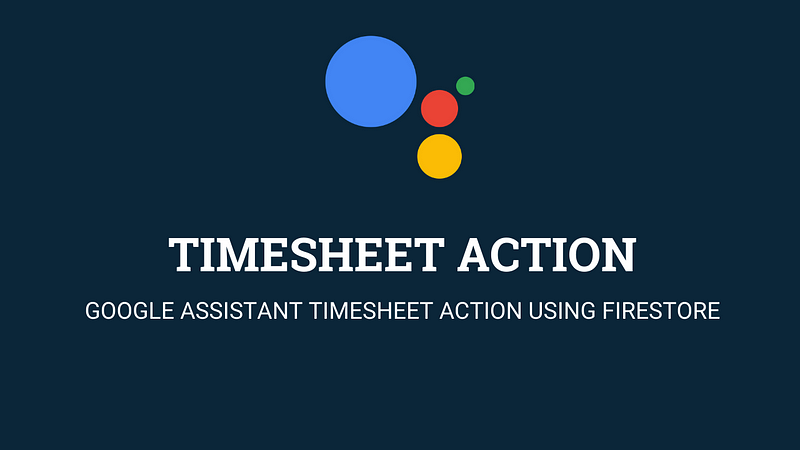
Overview
In my previous blog, I have explained how to create a timesheet action in Google by getting the data from Google Sheets.
In this blog, I will explain how to get the data from Firestore for the Timesheet action using Firebase Cloud Functions
Flow
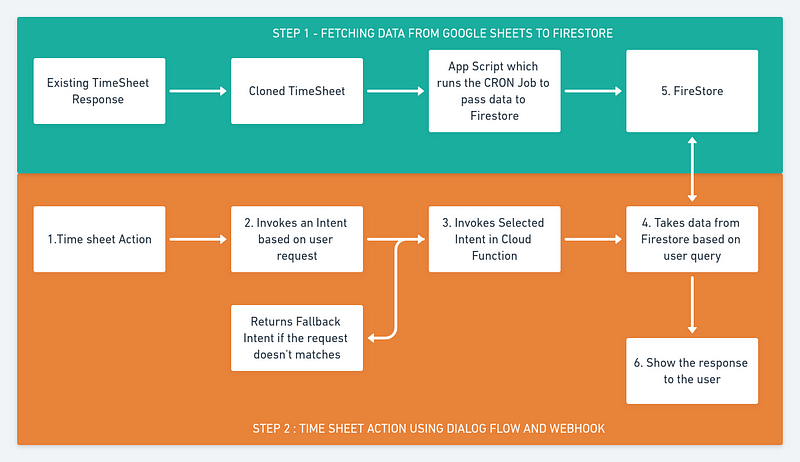
I have already covered how to fetch data from Google Sheets to Firestore using the Apps script check out this link to know more. We will cover the second part on how to create an action in Google Assistant
In the above link, i have explained how to get data from Google Sheet to Firestore with COVID19 data. If u want the Google Sheets and App scripts code for the Timesheet scroll down to Reference Links section :)
Objectives
What is Google Assistant
What is Cloud Function
Create a Google Action and integrate Dialogflow
Create intents in Dialogflow
Create Cloud functions and integrate with Dialogflow
Test your action
1. What is Google Assistant
Google Assistant is a personal voice assistant that offers a host of actions and integrations. From sending texts and setting reminders, to ordering coffee and playing music, the 1 million+ actions available suit a wide range of voice command needs.
2. What is Cloud Function
Google Cloud Functions is a lightweight compute solution for developers to create single-purpose, stand-alone functions that respond to cloud events without the need to manage a server or runtime environment.
3. Create a Google Action and integrate Dialogflow
Regardless of the Assistant application, you’re building, you will always have to create an Actions project so your app has an underlying organizational unit.
Open the Actions on Google Developer Console in a new tab. You should be looking at a clean Actions console that resembles the following (If you are a new user :)
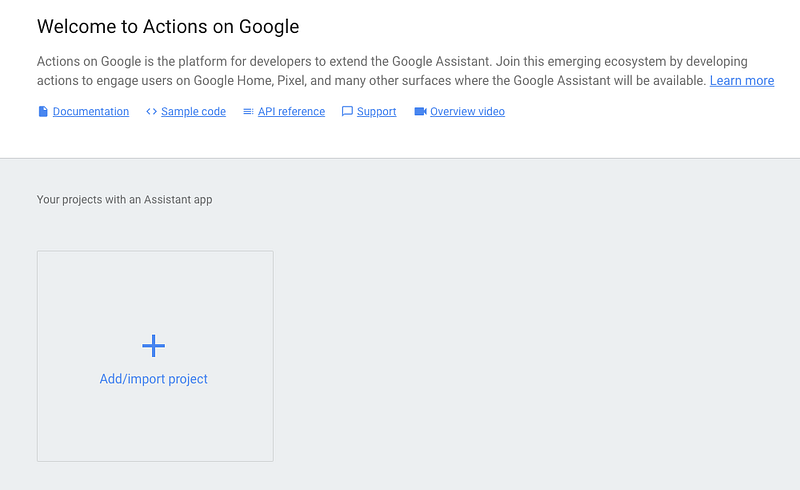
Click Add/import project and agree to Actions on Google’s terms of service when prompted.
Click into the Project Name field and add the project name standup sheet
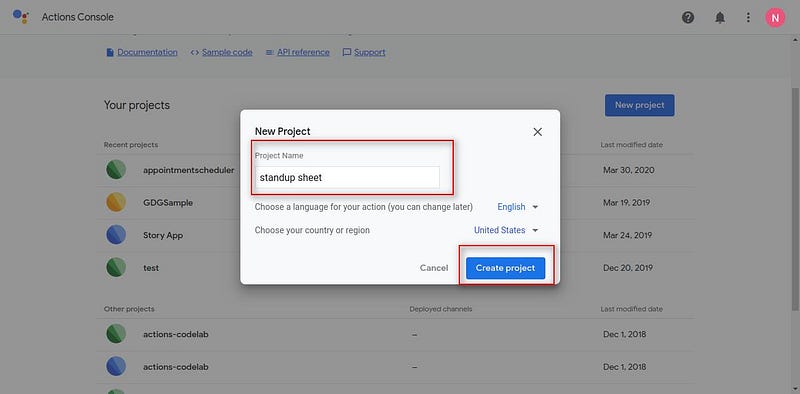
Once the project is created you will see a welcome screen like below, scroll down and select Conversational
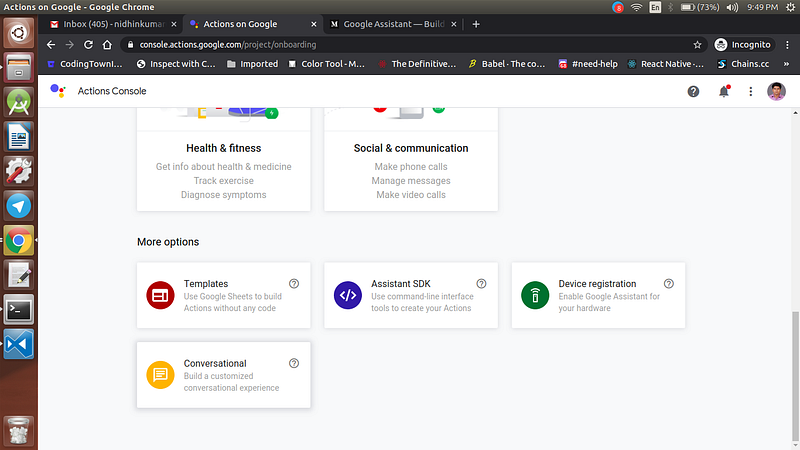
Once the Conversational is selected click the Invocation option at the left bar and set the Display Name as standup sheet
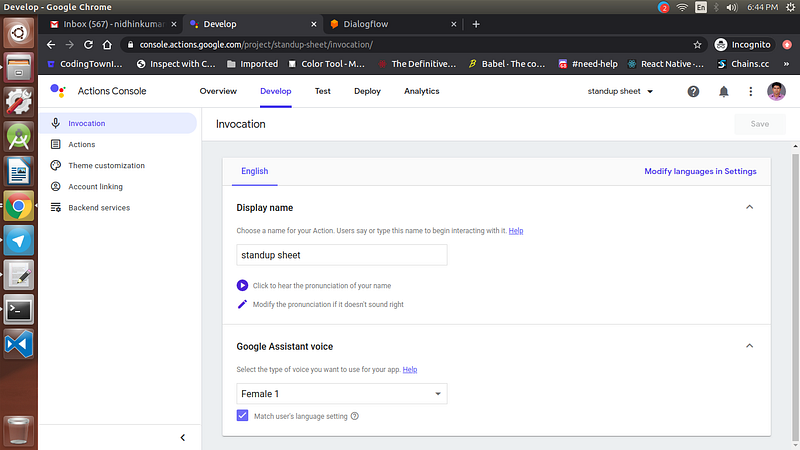
Once the Invocation name is given click Actions and select Get Started to Build your first action
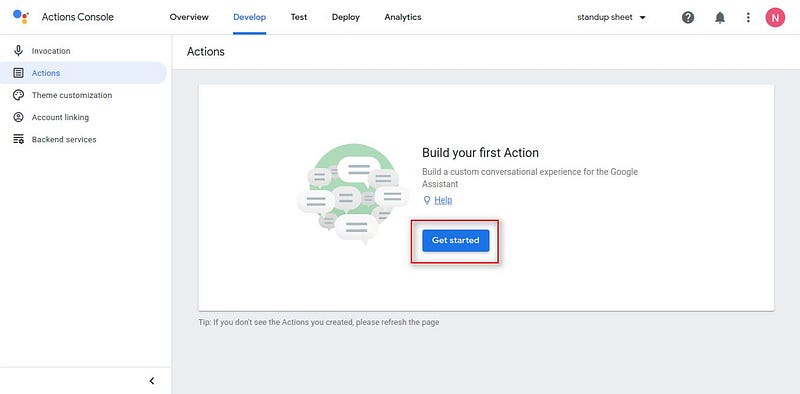
Now Select Custom intent and click Build
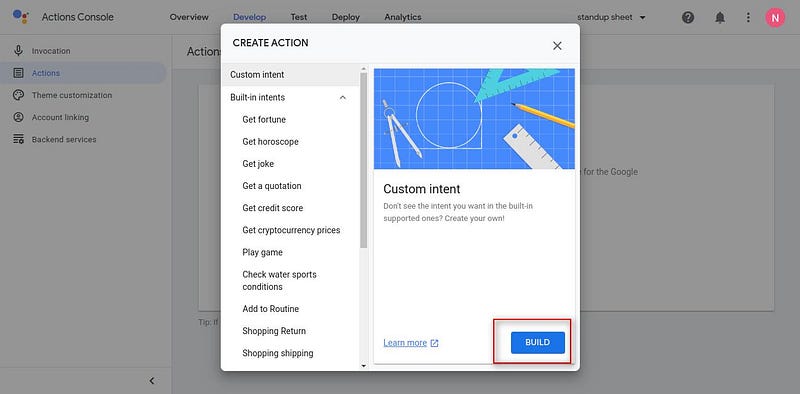
It will now navigate to the Dialogflow console. In the Dialogflow console check whether the agent name is standup sheet or not
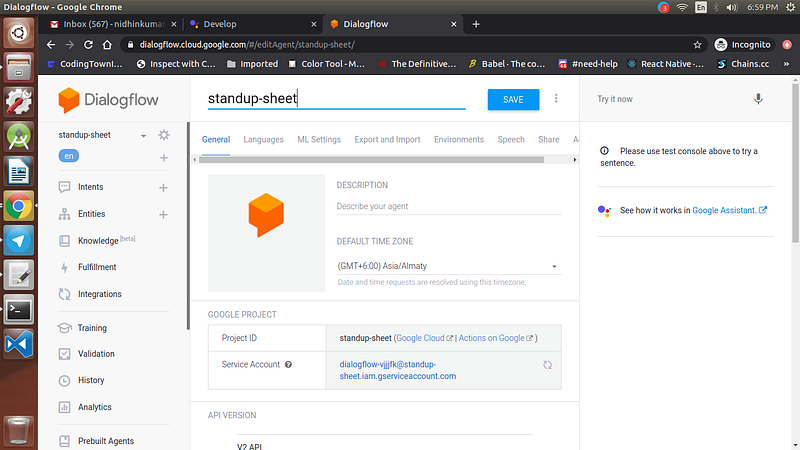
4. Create intents in Dialogflow
For this action, we will create the following intents
Timesheet-Forgotters
Entries
Individual Entries
Team
Projects
Exit
as well as we will use the Default intents available in Dialogflow.
Now click Create if the agent name is the same as your Action name. Once the agent is created on the left side you will see Intents. Click Intents
By default, you could see two intents namely
Default Welcome Intent
Default Fallback Intent
Click Default Welcome Intent
Now just scroll down you can see some Responses like the below image
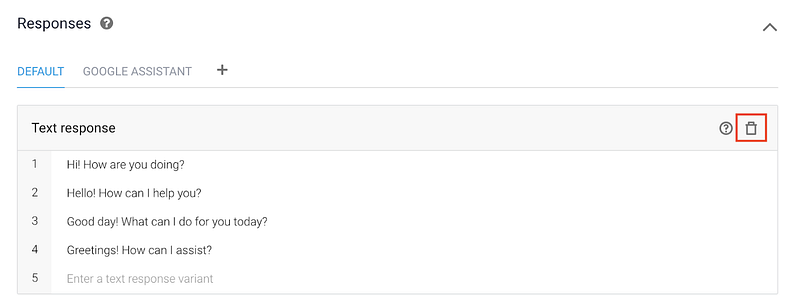
Delete all the default responses and create a new response like Welcome and Enable Webhook call for the Default Welcome Intent and click SAVE
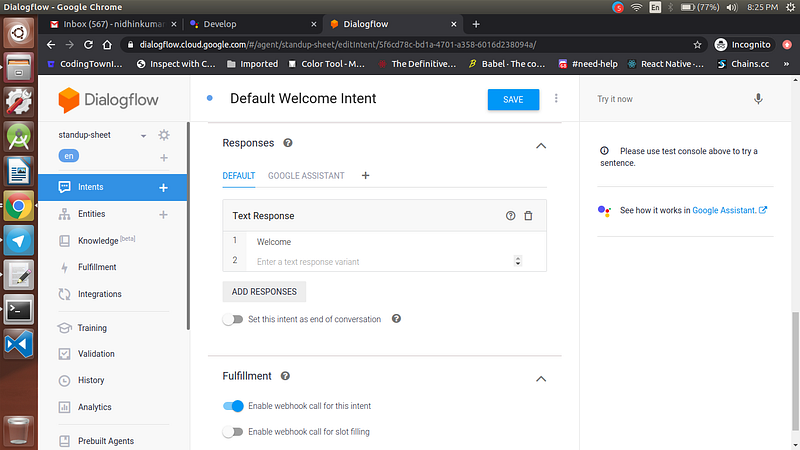
Now create a new Intent named Timesheet-Forgotters and in the Training Phases add the below phrases
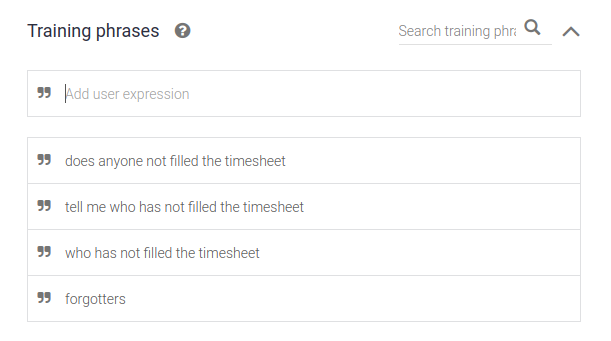
Timesheet-Forgotters intent is used to see who has not filled the timesheet yesterday. Now scroll down and select Fulfilment section and Enable webhook call for the intent

Entries
Now create another intent named Entries and add the below Training phrases
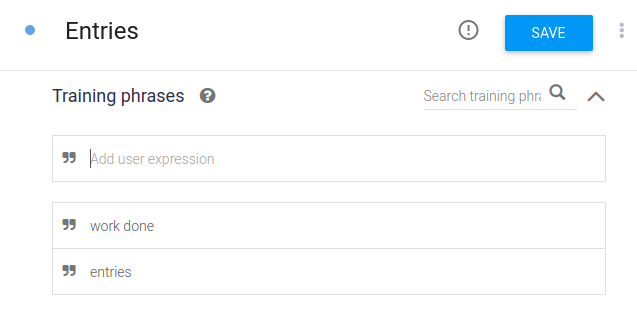
Entries intent is used to see the filled timesheet. Now scroll down and select Fulfilment section and Enable webhook call for the intent

Individual Entries
Now create another intent named Individual Entries and add the Training phrases like below
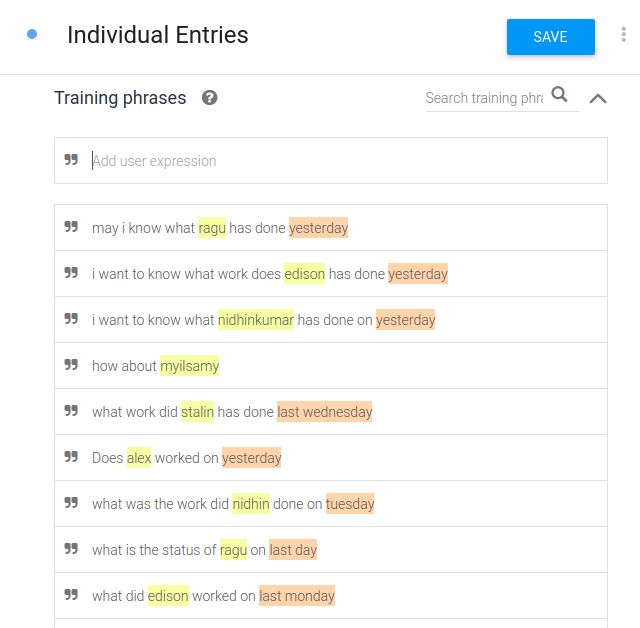
In the Training Phase, you could notice some highlighters over the name and the day those are nothing but the Entities
In the above intent, there are two entities created one is the
System Entity
User Entity
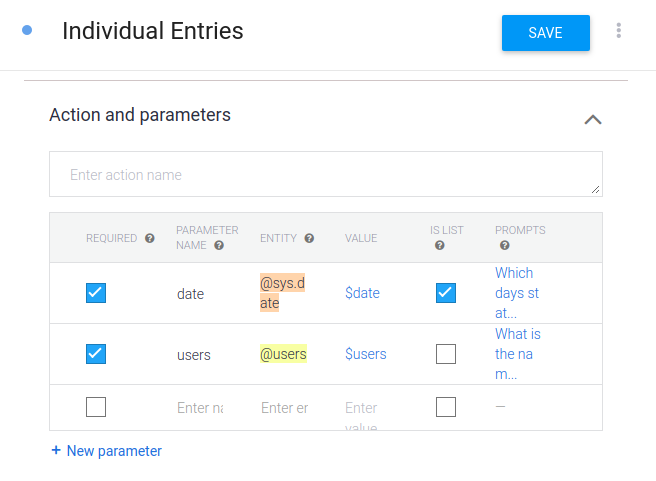
In the above Actions and parameters, you can see the entity as @sys.date which is the system entity, whereas the other one @users is a user-defined entity.
To Create a user-defined entity click on the Entities and give a name for the entity and add the entities like below
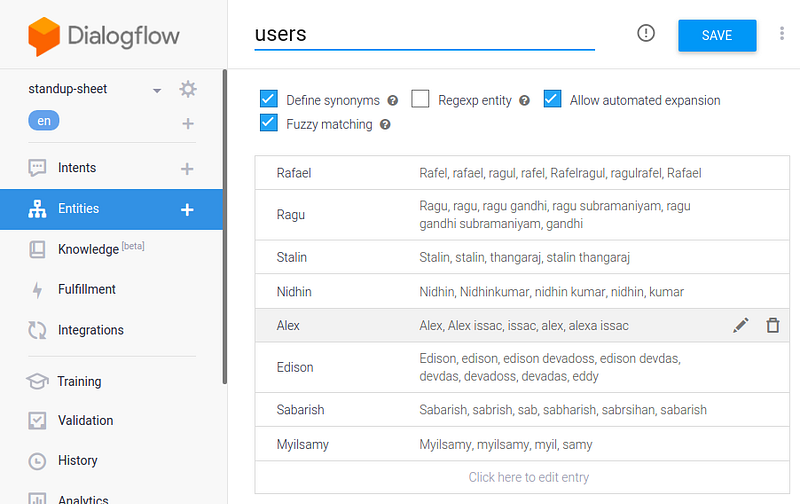
Now click SAVE to the entity and go back to the Individual Entries intent and enable webhook call for the intent

Team
Now create another intent named Team and add the Training phrase like below
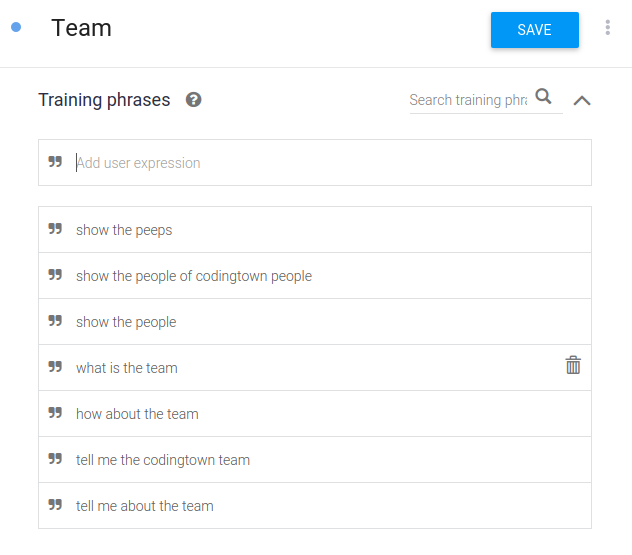
Now scroll down and select the Fulfilment section and Enable the webhook call for the intent

Projects
Now create another intent named Projects and add the Training phrase like below
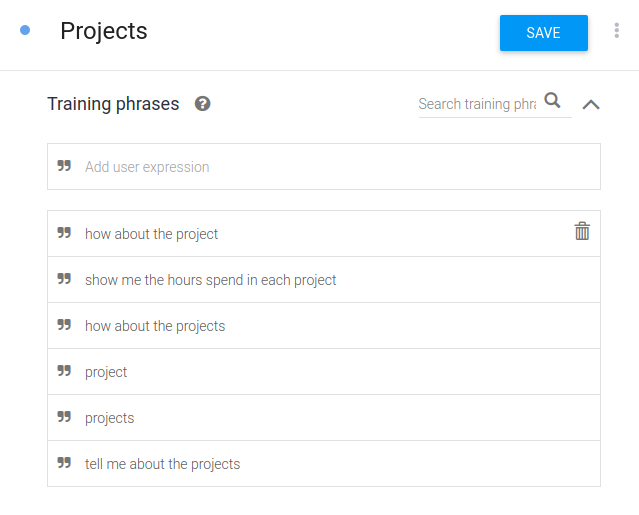
Project Training Phrase
Now scroll down and select Fulfilment section and Enable webhook call for the intent

Exit
Now create the final Intent named Exit and add the Training phrases like below
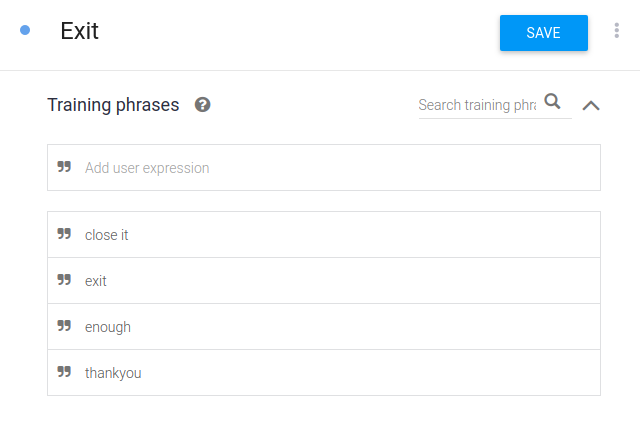
Now scroll down and select Fulfilment section and Enable webhook call for the intent

Now we have completed the Dialogflow part by creating all the necessary Intents and Entities.
5. Create Cloud functions and integrate with Dialogflow
Now we will create the firebase cloud function, Go to your local terminal and create a new directory named standup sheet and navigate to that directory
Once navigated initialize Firebase Cloud Function using the command firebase init and then select Cloud Function and select the default project as standup sheet
Once the project is created Firebase CLI will create the below files and node_modules folder
index.js
package.json
Now install the actions-on-google plugin using the command npm i actions-on-google as well as some of the libraries needed for date conversion as well as time conversation
npm i hh-mm-ss— To convert seconds to hh:mmnpm i lodashnpm i momentnpm i chrono-node— To extract date from a text
Once these plugins are installed open the standup-sheet project in a text editor. Once opened create two directories named
database
prompts
as well as create an index.js file in each of the above folders
Once it is done open database -> index.js file and add the below code
'use strict';
const admin = require('firebase-admin');
admin.initializeApp();
module.exports = admin;
Click Save and open prompts -> index.js file and add the below prompts. The reason for moving the conversation to a commonplace is that we can use it anywhere don’t need to rewrite the dialogs again and again :)
'use strict';
module.exports = {
"welcome_new": "Welcome to Standup sheet.I will assist you to know what your team has done yesterday as well as the total hours spent on each project. Which one you would like to see",
"welcome_default": "Welcome to Standup sheet. What you want to see today",
"standup_options": "Entries, Team, Project",
"entries_dialog": "Getting the entries made by your team yesterday",
"no_entries": "Seems no one in your team has made filled the timesheet",
"timesheet_forgotters": "Here is the list of forgotters who has not filled the timesheet yesterday",
"timesheet_filled": "Great everyone in your team has filled the timesheet",
"team": "Here is your team",
"projects": "Here is the list of projects your team is handling",
"thankyou": "Thankyou, Have a nice day",
"database_error": "Sorry, something went wrong. Check back later."
}
Now open index.js file and import the plugins which are needed for the action like below
const functions = require('firebase-functions');
const moment = require('moment');
const TimeFormat = require('hh-mm-ss');
const lodash = require('lodash');
const chrono = require('chrono-node');
const admin = require('./database');
Now we will import the database needed for our action
const db = admin.firestore();
const timesheetCollectionRef = db.collection('timesheet');
const teamCollectionRef = db.collection('team');
const projectsCollectionRef = db.collection('projects');
Now import the prompts, actions-on-google and Dialogflow like below
const PROMPTS = require('./prompts');
const { dialogflow, Suggestions, Table } = require('actions-on-google');
const app = dialogflow();
Now we will write the logic for the Default Welcome Intent like below
app.intent('Default Welcome Intent', conv => {
if (conv.user.last.seen) {
conv.ask(`${PROMPTS.welcome_default}`);
} else {
conv.ask(`${PROMPTS.welcome_new}`);
}
conv.ask(new Suggestions(['Timesheet-Forgotters', 'Entries', 'Team', 'Projects', 'Cancel']));
});
Here we have added a condition whether the user is a new one or existing user based on the condition we are displaying the response.
You can get the rest of the intents logic from the below code.
Once the code is completed you can deploy it to Firebase using the command firebase deploy. Once your code is deployed you will get a Webhook URL.
Copy the webhook URL and paste the webhook URL in Dialogflow
6. Test your action
Now if you test your action you will see an output like below
Source: Nidhinkumar
Reference Links
Timesheet Google Sheet Structure
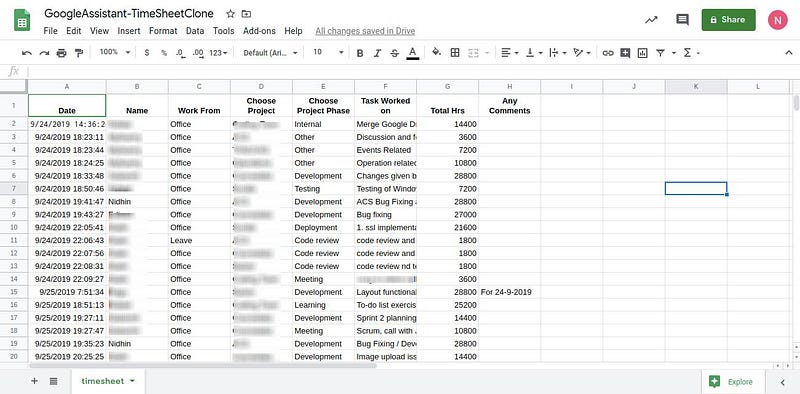
Google Sheets Structure
App scripts code for Timesheet
Adding timesheet to Firestore — Click here to view the code
Adding team and project to Firestore — Click here to view the code
Deleting timesheet, team, and project from Firestore — Click here to view the code
Congratulations!
You have learned how to create a Google Assistant Timesheet action by loading data from Firestore using Dialogflow. Happy Learning :)
Subscribe to my newsletter
Read articles from nidhinkumar directly inside your inbox. Subscribe to the newsletter, and don't miss out.
Written by
